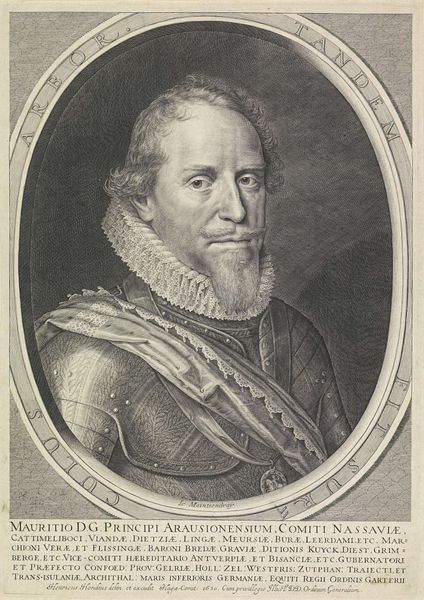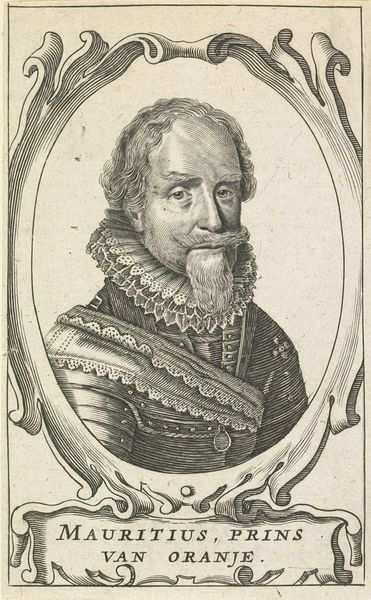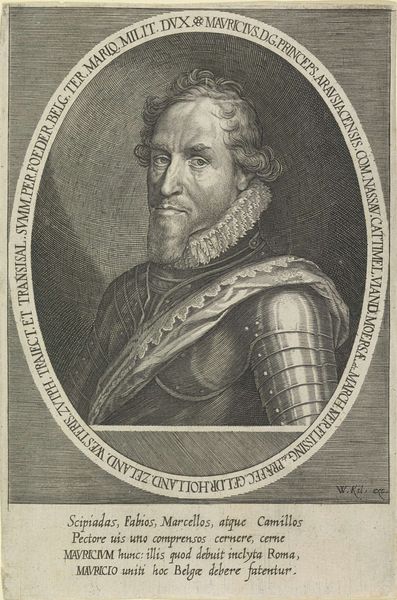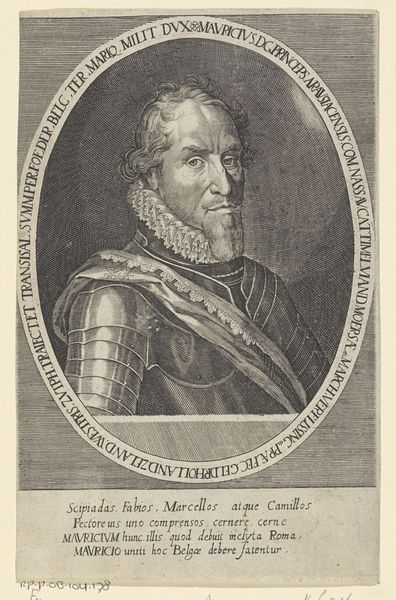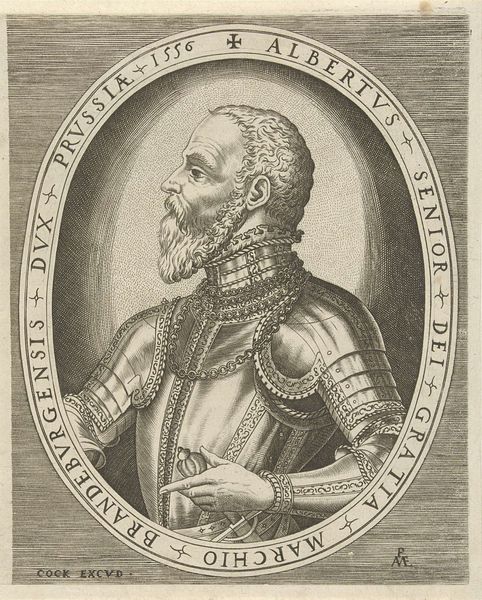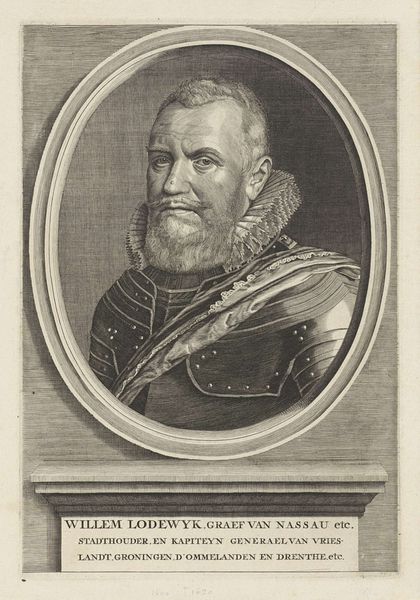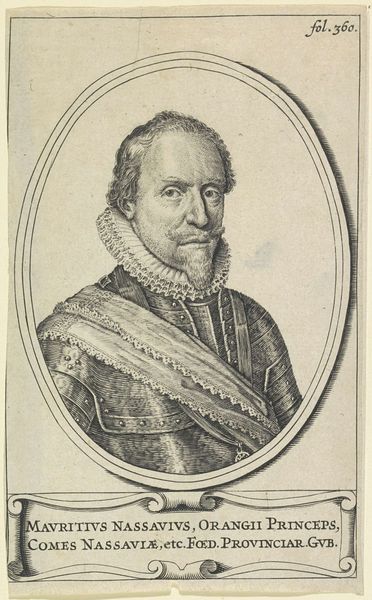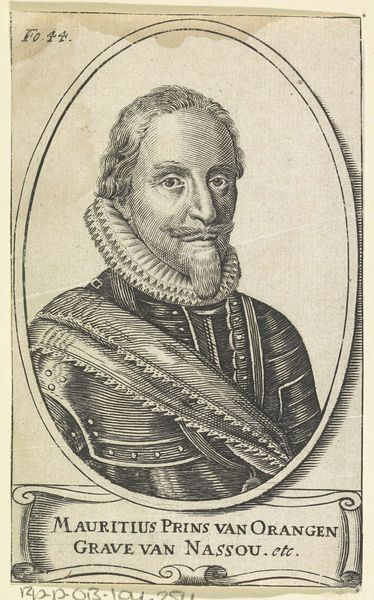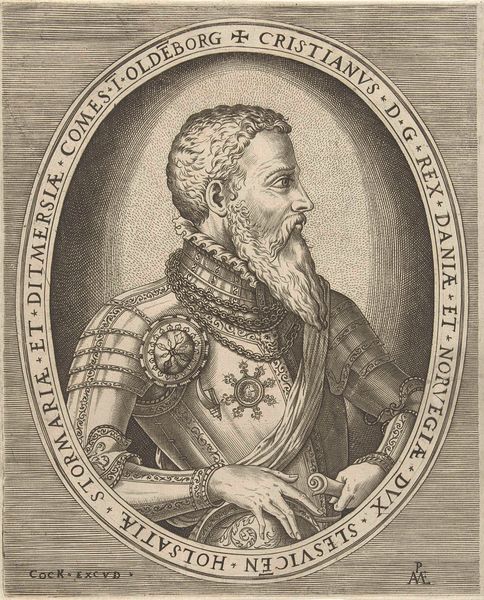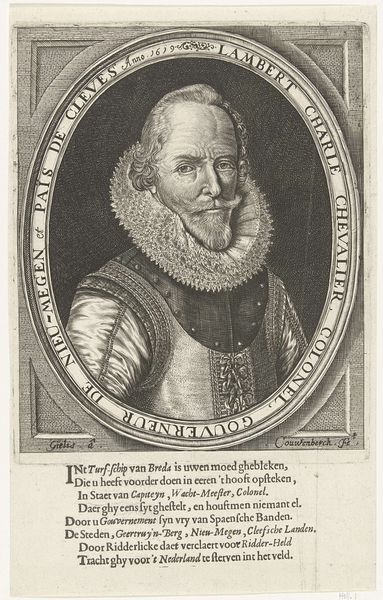
drawing, etching
#
portrait
#
pencil drawn
#
drawing
#
facial expression drawing
#
baroque
#
etching
#
pencil sketch
#
charcoal drawing
#
portrait reference
#
pencil drawing
#
animal drawing portrait
#
portrait drawing
#
pencil work
#
history-painting
#
fine art portrait
Dimensions: height 436 mm, width 314 mm
Copyright: Rijks Museum: Open Domain
Curator: Here we have Crispijn van den Queborn's "Portret van Maurits, prins van Oranje" from 1624. It's an etching, currently held in the Rijksmuseum. Editor: My first impression is how... reserved he seems. So stoic, with that intense gaze. It almost feels like I shouldn't be looking. Curator: It's a fascinating example of Baroque portraiture. Consider the socio-political context: Prince Maurits was a key figure in the Dutch Revolt. This image reinforces his authority. Note the meticulously rendered textures—the ruff collar, the striped doublet. These are not just decorative; they reflect wealth, status, and power carefully constructed through the labor of artisans and printers. Editor: Exactly! It's like every thread in that collar whispers "authority". But it’s interesting because etching feels… less grand than oil paint. Was this choice deliberate, to reach a wider audience maybe, a sort of… proto-propaganda? Curator: Precisely. Etchings were far more reproducible than painted portraits, enabling a wider distribution of his image, cementing his legacy in the Dutch Republic’s collective consciousness. It collapses distinctions between art and production, really. The very act of its reproduction shapes the narrative. Editor: You're right, the mass-producible aspect is so interesting and does feel modern. But there's a tension there, too. He looks stiff, trapped in that finery. Maybe it speaks to the burdens of leadership, a beautiful cage woven from societal expectation. Does his status become a literal constriction? I feel a strange sympathy for him. Curator: The production of that sympathy, of the carefully cultivated image... that’s the craft, isn't it? These were made not just to present him but also to ensure a particular set of perceptions of what it means to lead a Republic at this point in its trajectory. We might miss that the hand and labour involved shaped what could become. Editor: So, we began with an image seemingly projecting unflinching authority, but through dissecting its medium and making, we find this hidden narrative about social crafting and possibly the internal price paid for power... interesting. Curator: Exactly, it compels us to think deeply about art as a site of constant exchange of symbolic and economic capital.
Comments
No comments
Be the first to comment and join the conversation on the ultimate creative platform.
